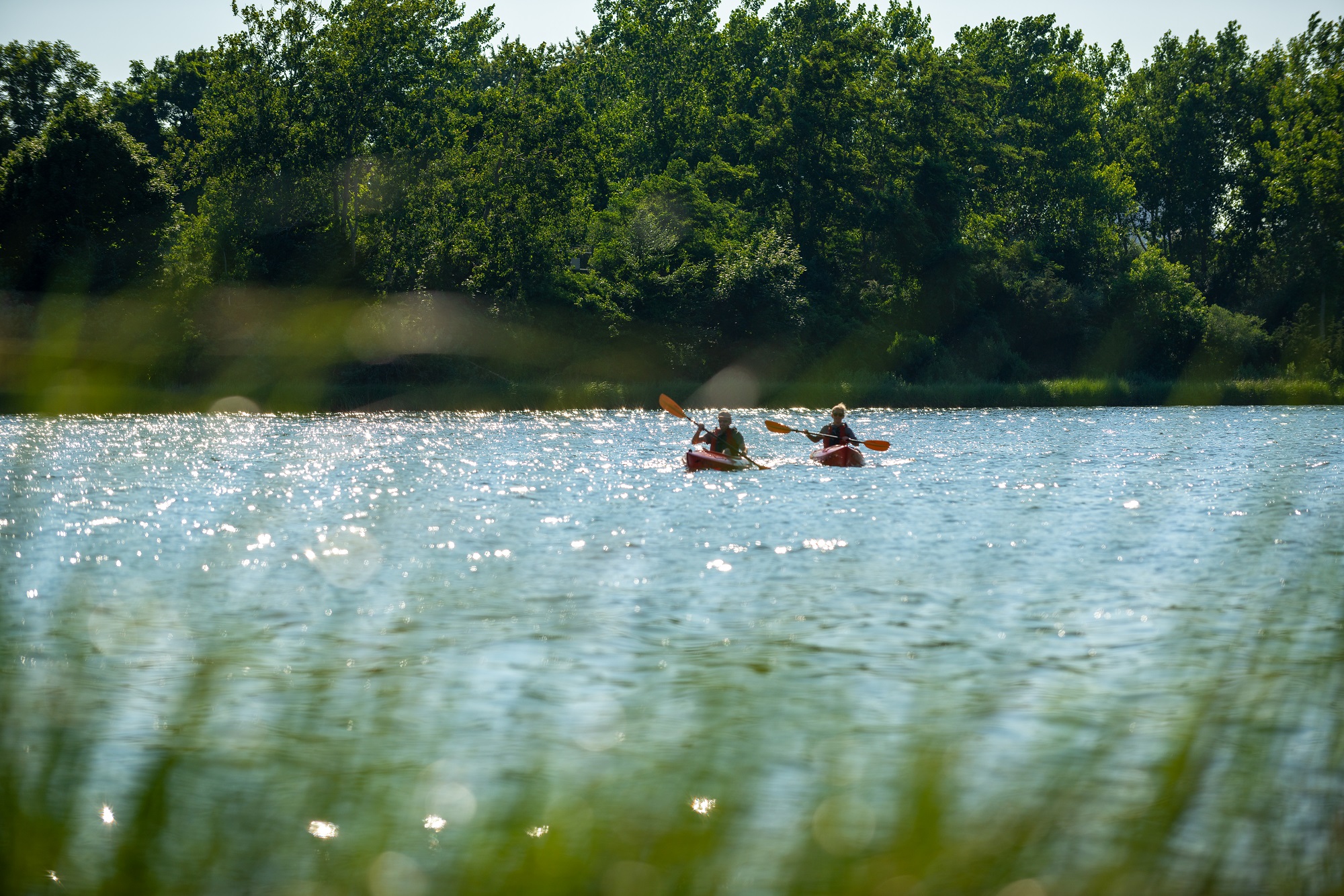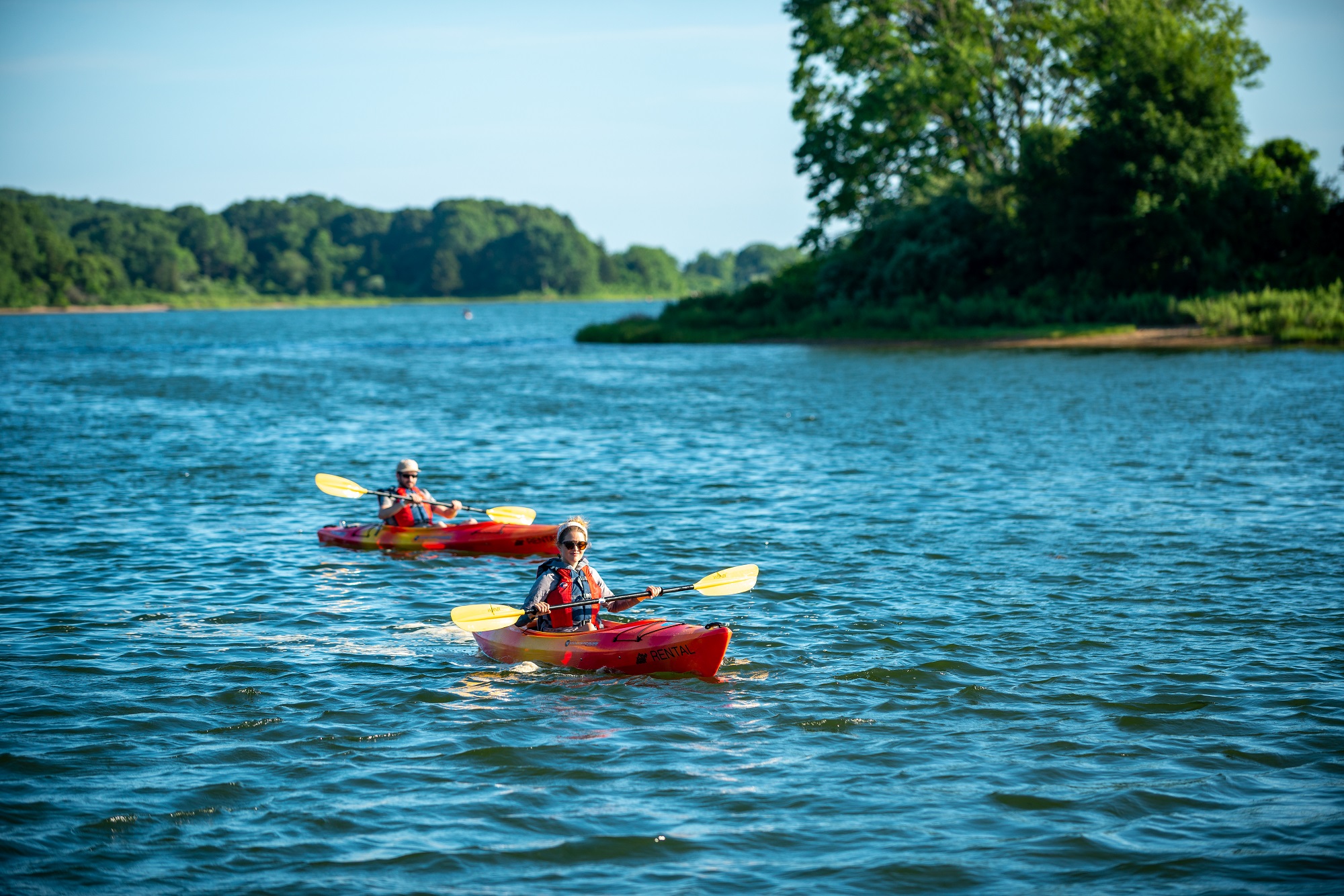To feather, or not to feather, that is the question. Well, at least a question facing many paddlers.

What Does it Mean to Feather a Paddle?
Feathering a paddle simply means adjusting the blades so they are at an angle to each other, in contrast to an unfeathered paddle which has both blades aligned.
Old School Views on Paddle Feathering
When I first started teaching kayaking more than two decades ago, all “real” kayakers used paddles with a 90° feather (i.e., the blades were offset at 90°). Back then, it was common for paddles to come with three settings—right, left, and neutral—and no “serious” paddler would ever consider using the neutral position.
Less Wind Resistance
One of the primary reasons given for feathering paddles was to assist in paddling into the wind—after all, anyone who has paddled into a headwind has felt the increased resistance created by an unfeathered paddle. On the surface, this seems like a logical justification for feathering a paddle, however, when you think about it raises some questions. Most notably, what happens when the wind shifts or you paddle in a different direction? A wind coming from the side will have the same effect on a feathered paddle as a headwind does on an unfeathered paddle.
Hand Dominance
The other argument for feathering paddles was to align the paddle to the paddler’s dominant hand—a “drive” hand and a “guide” hand. The purpose of the hands was:
- Drive hand: the hand that is lined up with the blade “powers” the paddle.
- Guide hand: the hand that the paddle “floats” in is used as a rotation point.
But once again, the more you think about this, the less sense it makes—you’re essentially padding one-handed, rather than using both arms equally.

Evolving Notions on Feathered Paddles
While many guides had questions about feathering paddles back in the day—myself included—no one asked them out loud. It wasn’t until some years later at a clinic that they were given a voice and my thoughts about feathered paddles began to shift.
My epiphany happened when we were asked to look back at the history of paddles and how they’ve been used. In general, whether on the Pacific Rim of Asia or off the coast of Greenland, early kayakers used unfeathered paddles. For proof, look no further than the unfeathered Greenland paddles that remain popular today centuries after they originated.
What spurred the popularity of feathered paddles? It came from whitewater kayak racing! A feathered paddle allows racers to cut closer to the gates they slalom through on a whitewater course and makes it less likely to get hung up on them. And, if feathered paddles do offer an advantage in the wind, it’s in whitewater kayak racing, a sport where seconds count.
How did feathered paddles become mainstream? The same reason you see super-wide skis on groomers and long-travel downhill-oriented bikes on cross-country trails—it looks cool!

Should You Feather Your Paddles?
Following the clinic and after a decade of teaching people to feather their paddles, I went back to the drawing board and rethought how to hold a paddle. Both feathered and unfeathered have their pros and cons. For example, unfeathered paddles are easier for beginning paddlers to learn with, while some kayakers find feathered paddles easier on their wrists, especially during long days on the water.
Me, I paddle with a slight 30° feather, which works for my style. This is the ultimate lesson: there’s no golden rule for feathering a paddle, it’s about paddling a lot and finding what works best for you.
So, here’s my conclusion:
To feather or not to feather, the question lies,
Each choice a reflection, a compromise,
For in the end, it matters not the norm,
But the love of paddling it helps form.
Do you have a strong opinion about feathering paddles? If so, we want to hear about it in the comments below!
Luke Foley
Luke Foley is passionate about discovering and sharing hidden local treasures and has long been a New England adventure enthusiast. After all, there are only a few places where you can skin for fresh tracks in the morning and have a sunset surf session on the same day.




